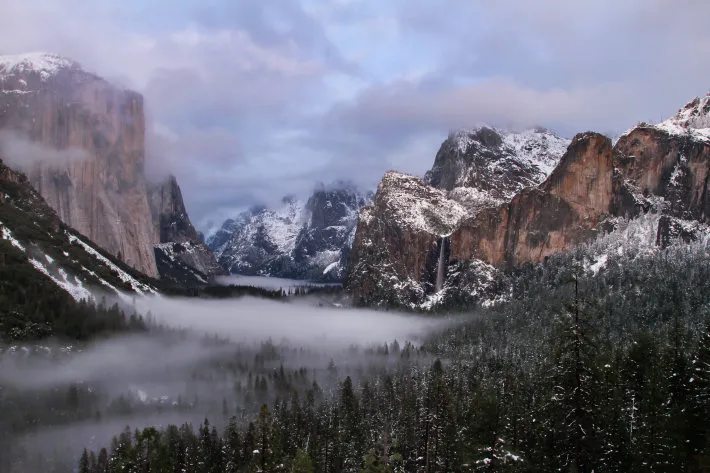Yosemite National Park is a bucket-list destination, rich in natural beauty, outdoor adventure, and cultural heritage. From breathtaking granite cliffs to ancient sequoia groves, there are countless things to do in Yosemite that appeal to every kind of traveler. Whether you're a first-time visitor or returning for a new season, this guide reveals both iconic stops and unique experiences you might not know about.
If you're researching things to do in Yosemite, prepare to be inspired by a mix of scenic views, tranquil escapes, and adrenaline-fueled excursions. We'll also cover where to stay, how to prepare to enhance your visit to this legendary national park.
When should I go to Yosemite National Park?
Yosemite is a true year-round destination, offering enough variety and size to keep outdoor enthusiasts engaged even during the off-season. While it sees the highest number of visitors from spring through fall, it peaks in midsummer.
The start of the spring hiking season varies due to unpredictable snow conditions, but by May, the waterfalls are at their most spectacular. This is the best time to visit Yosemite Falls, standing at 2,425 feet. For a rewarding challenge, take the strenuous 3.4-mile trail to the top, and don’t miss the stunning Sentinel Falls (1,920 feet) and Ribbon Fall (1,612 feet).
During peak seasons, including summer, it's important to plan ahead. Park reservations are required from July 1 to mid-August, and on weekends and holidays during spring (mid-April to late June) and late summer to fall (mid-August to late October). Be sure to check the specific dates and secure your reservation on the park’s website. If you don’t have a reservation, you’ll need to arrive before 5 a.m. to enter the park.
Winter brings a much quieter atmosphere, with snow-covered forests and fewer visitors, though some roads, like those leading to Glacier Point, are closed from November through early June. However, crowds gather in February for the famous Yosemite Firefall, when Horsetail Falls is illuminated by the setting sun, creating a fiery cascade down the face of El Capitan. On clear days, head to the El Capitan Picnic Area around twilight to witness this breathtaking sight.
How much time should I spend in Yosemite?
You could easily spend an entire month exploring Yosemite’s extensive trails without covering the same ground twice. However, with some thoughtful planning, you can experience the park’s highlights in just a few days, or even a mere 12 hours.
With only one day, you can take a scenic drive to see Yosemite’s most iconic landmarks and still have time for one or two short hikes or bike rides. Start by heading to Yosemite Valley, making a stop at the famous Tunnel View for stunning views of El Capitan, where you can watch climbers scaling the massive rock face.
Consider renting a bike from Yosemite’s bike-sharing program and ride partway to Mirror Lake. Afterward, hop back in your car and drive up to Glacier Point to enjoy panoramic views of Half Dome and the vast Tenaya Canyon.
If you have two days, you can take your time and hike to Glacier Point along the challenging Four Mile Trail. However, during late spring, it’s worth spending your second day hiking the Vernal & Nevada Falls Trail, a loop that will lead you past stunning waterfalls adorned with rainbows.
A third day allows for a deeper exploration of the park. Start the morning with a half-day hike in Yosemite Valley, such as the Cook’s Meadow Loop or Yosemite Falls Trail. Later, visit the Yosemite Museum to admire Native American baskets and explore the park’s history. For a creative take on Yosemite, stop by the Ansel Adams Gallery to experience the park through the lens of one of its most famous photographers.
Top Things To Do in Yosemite National Park
With so many breathtaking landscapes, thrilling adventures, and serene spots, it can be hard to know where to begin. That’s why we’ve narrowed down the most unforgettable things to do in Yosemite National Park, whether you’re here for a day or a week.
Glacier Point
One of the most iconic things to do in Yosemite is experiencing sunrise or sunset from Glacier Point, where the shifting light transforms the valley below into a living canvas of color and shadow. Perched at 7,214 feet, this panoramic viewpoint offers unparalleled vistas of Half Dome, Nevada Falls, Yosemite Falls, and the expansive Yosemite Valley. The high elevation gives visitors a bird’s-eye perspective of the park's dramatic geography and sweeping natural beauty.
It’s an ideal spot for quiet reflection, photography, or simply soaking in the grandeur of Yosemite. Visitors often find this overlook to be one of the most memorable and emotionally resonant moments of their trip, a scene that stays with them long after they leave the park.
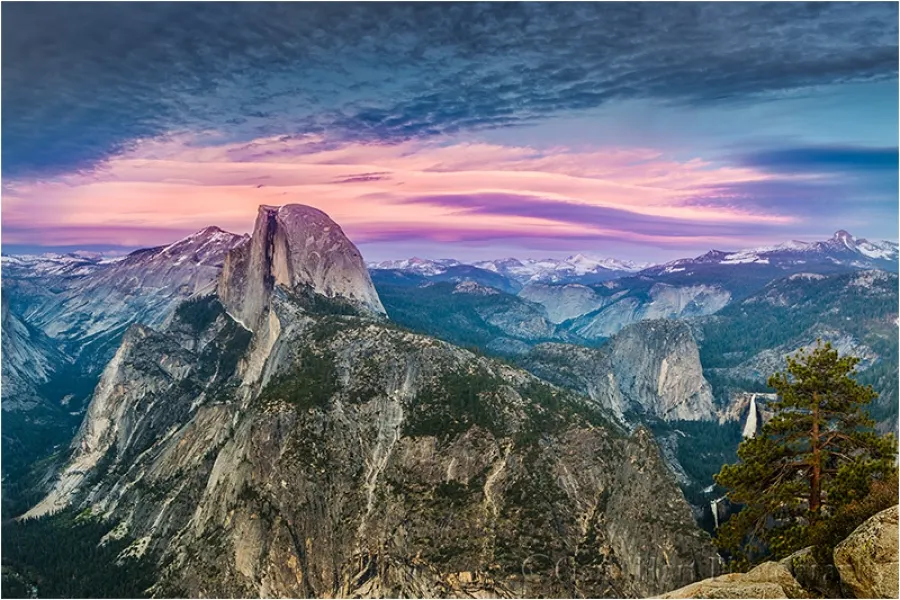
Taft Point
Less crowded than Glacier Point, Taft Point offers an intimate and exhilarating experience for those willing to venture a bit off the beaten path. The trail to Taft Point is approximately 2.2 miles round trip from the trailhead on Glacier Point Road, with minimal elevation gain, making it accessible to most hikers. Along the way, you'll pass through a tranquil forest of fir and pine before arriving at the dramatic edge of Yosemite Valley. Here, the cliffs drop abruptly for thousands of feet, revealing sweeping vistas of El Capitan, Yosemite Falls, and the meandering Merced River far below.
Unique to this location are the vertical fissures, deep cracks in the granite that provide a fascinating geological feature as well as a sobering reminder of nature’s power. Due to the unguarded cliff edges and potential gusty winds, hikers should exercise caution and wear proper footwear. This trail is perfect for those who seek solitude, dramatic scenery, and one of the most heart-pounding views in Yosemite.
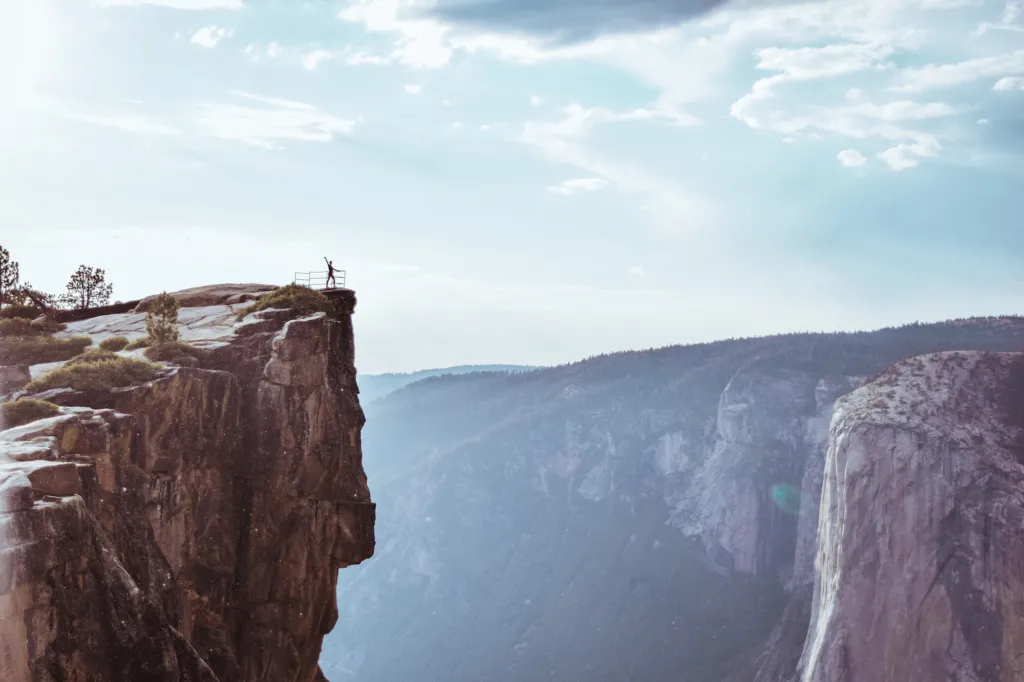
Columbia Rock
This short but steep hike offers a rewarding perspective of Yosemite Valley and an up-close encounter with the base of Upper Yosemite Fall, one of the tallest waterfalls in North America. Columbia Rock is located about one mile up the Yosemite Falls Trail, and the round trip hike is roughly two miles. While the trail gains elevation quickly, the climb through shaded oak woodlands provides a pleasant break from the valley floor and glimpses of granite formations along the way.
At the top, hikers are treated to a broad rock ledge with panoramic views stretching across the valley. In addition to Upper Yosemite Fall’s powerful cascade, you'll see iconic features like El Capitan and Half Dome in the distance. It’s an excellent hike for those seeking both challenge and reward without dedicating a full day.
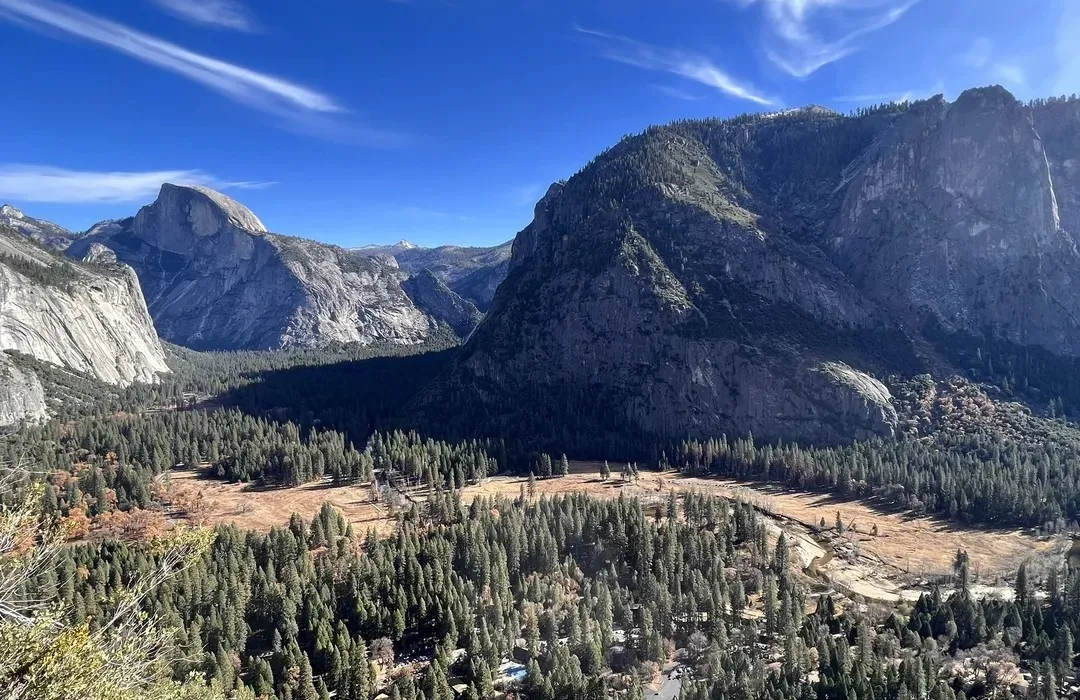
Half Dome Views
There are many ways to admire Half Dome without climbing it, each offering a unique vantage point that showcases the monolith’s distinct profile and scale. From Glacier Point, you gain a sweeping overview that frames Half Dome amidst a vast alpine landscape, making it clear why it's one of Yosemite's most photographed icons. Tunnel View offers a more compressed but equally dramatic composition, where Half Dome appears as a distant sentinel rising beyond the valley. At Mirror Lake, when the water is calm, the granite dome reflects clearly on the surface, an awe-inspiring sight especially during the early morning.
Throughout the day, the light plays across Half Dome's granite face, creating shadows and colors that shift from golden to silver to blue-gray, making it a favorite subject for painters and photographers alike. Whether viewed in solitude or alongside other landmarks, Half Dome’s sheer vertical drop and distinctive curved summit make it one of the most instantly recognizable features in Yosemite National Park.
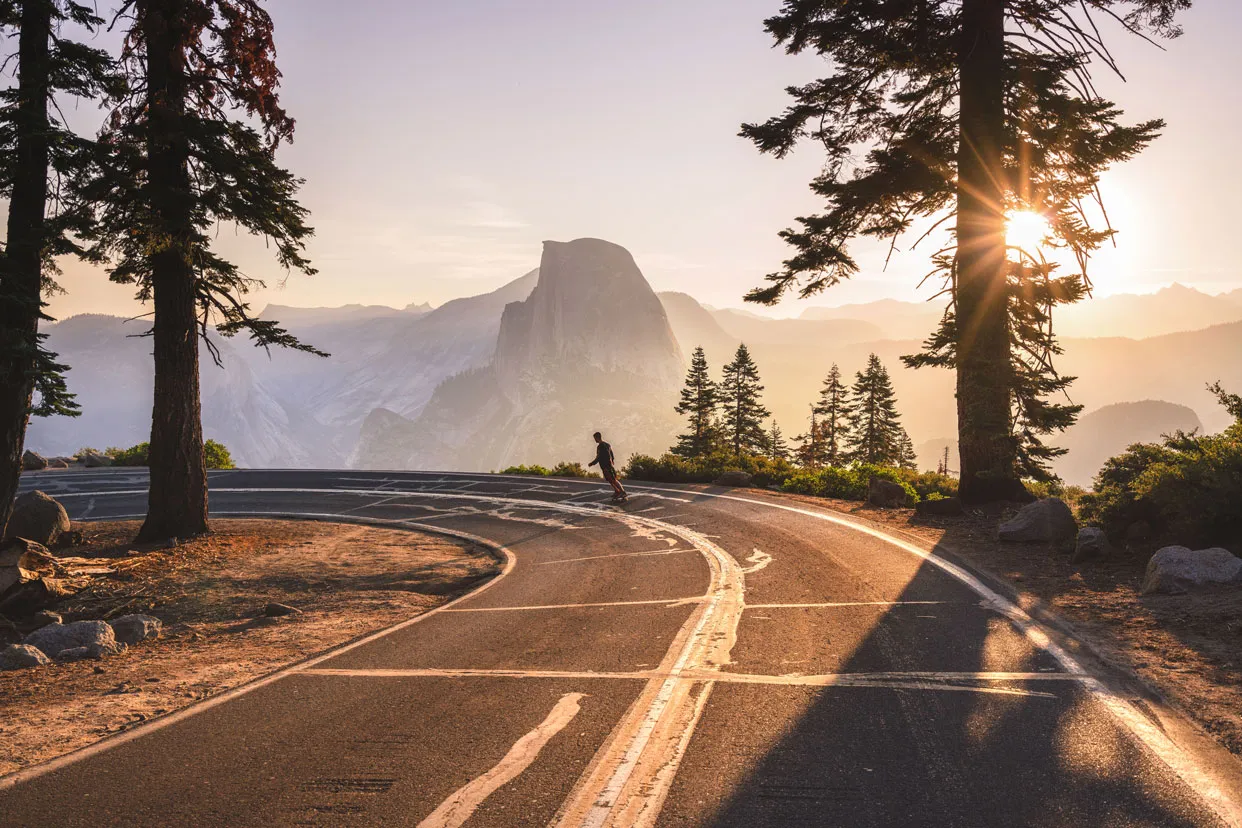
El Capitan
Towering more than 3,000 feet above the Yosemite Valley floor, El Capitan is a defining feature of the park and a world-renowned climbing destination. Its massive vertical face draws elite climbers from across the globe, and spectators often gather in El Capitan Meadow to watch them scale this granite giant. With a good pair of binoculars, you can spot climbers inching their way up iconic routes like The Nose, often spending multiple days on the wall with only ropes and portaledges.
Even if climbing isn't your interest, the grandeur of El Capitan is humbling. The best viewing spots include El Capitan Meadow, where you can look straight up the sheer wall, and Tunnel View, which frames El Capitan alongside Bridalveil Fall and Half Dome. Sunrise and golden hour are ideal for photography, as the sunlight casts a warm glow across its vast surface.
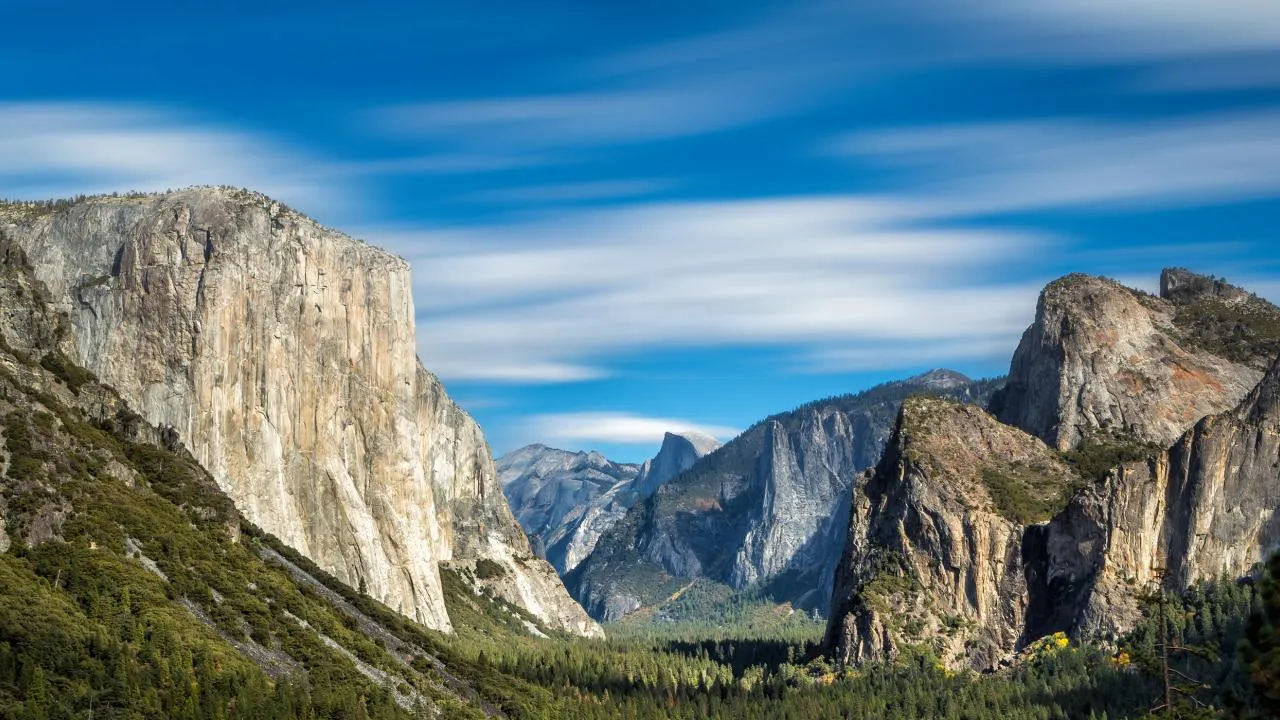
Vernal Fall
The Mist Trail to Vernal Fall is one of Yosemite’s most exhilarating hikes, drawing visitors with its dramatic ascent and the thunderous presence of cascading water. The trail begins near Happy Isles in Yosemite Valley and climbs steadily for 1.5 miles to the Vernal Fall footbridge, offering views of the Merced River as it churns through a rugged granite gorge. Continuing another half-mile beyond the bridge, hikers encounter a steep granite staircase of over 600 steps carved directly into the rock, often slick with mist from the falls.
The experience is immersive, each step brings you closer to the roar and spray of Vernal Fall, especially powerful in spring and early summer when snowmelt peaks. Along the way, you'll be treated to lush vegetation nourished by the mist and occasional rainbows forming in the afternoon sun. It’s essential to wear waterproof gear and sturdy, non-slip footwear for both comfort and safety. The summit offers a rewarding vista of the waterfall’s crest and a serene pool above it, perfect for a well-earned break before heading back or continuing on to Nevada Fall.
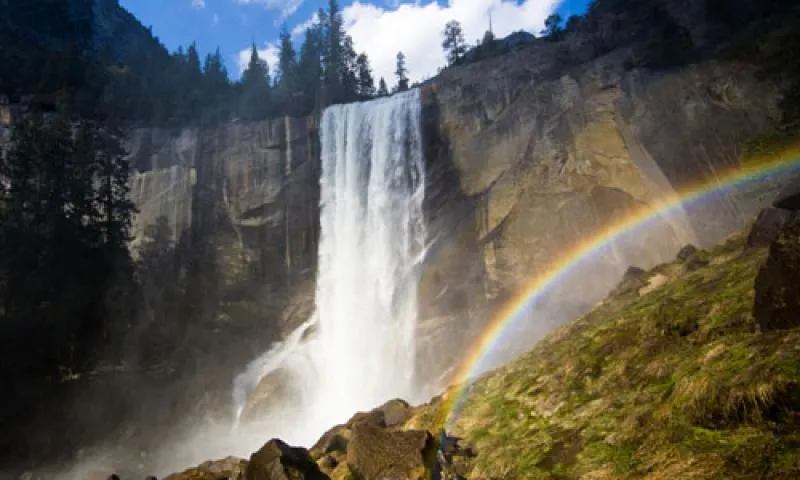
Cook’s Meadow
For a more relaxed experience, the Cook’s Meadow Loop offers a flat, scenic trail that delivers some of the most iconic views in Yosemite National Park. The loop stretches approximately one mile and passes through a lush meadow that changes with the seasons, wildflowers bloom in spring, golden grasses sway in summer, and morning fog adds a mystical touch in fall.
Surrounded by towering granite icons like Yosemite Falls, Half Dome, and Sentinel Rock, this trail allows you to immerse yourself in the grandeur of the park without strenuous effort. Interpretive signs along the way provide fascinating insights into the geological formations, wildlife, and cultural history of Yosemite Valley. Benches are available at several points, making it a perfect route for families, casual walkers, photographers, or anyone seeking a peaceful encounter with nature.
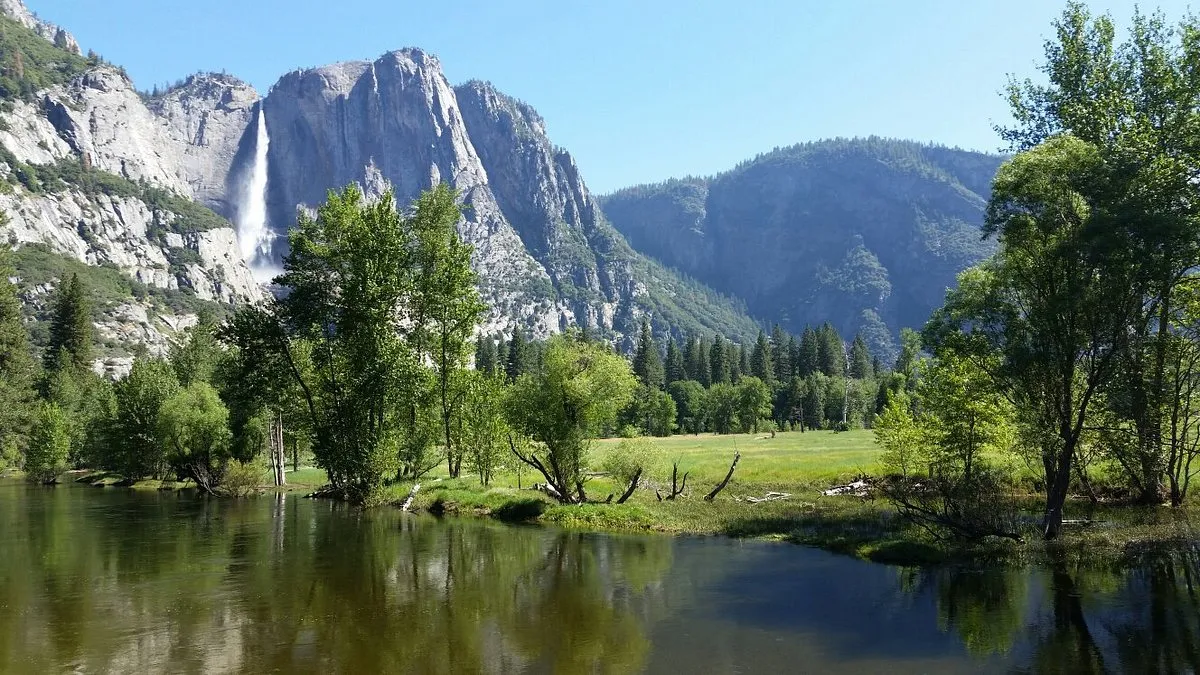
Tunnel View
Tunnel View is one of the most iconic and frequently photographed overlooks in Yosemite National Park. Positioned just beyond the Wawona Tunnel on State Route 41, this elevated viewpoint opens up to a breathtaking panorama of Yosemite Valley, with El Capitan rising boldly to the left, Bridalveil Fall cascading to the right, and the rounded crest of Half Dome standing in the distance.
The scene is particularly dramatic at sunrise and sunset, when sunlight paints the granite cliffs in hues of orange and pink, while early morning mist often lingers in the valley below, creating an ethereal atmosphere. It’s a favorite stop for both first-time visitors and seasoned photographers seeking that quintessential Yosemite shot. Despite its easy roadside access, the emotional impact of this view is profound and enduring.
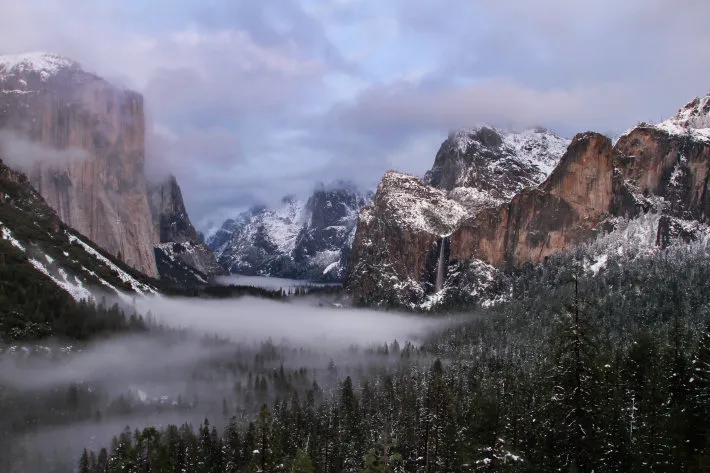
Biking Yosemite Valley
Yosemite Valley features over 12 miles of dedicated bike paths that weave through some of the park’s most iconic landscapes, offering visitors an active yet relaxing way to explore. Biking allows you to cover more ground than walking, making it a convenient option for seeing more sites in a limited amount of time. It’s also a great way to avoid the congestion of vehicle traffic and parking challenges, particularly during peak season.
Notable routes include paved loops around Yosemite Village, Mirror Lake, and the Yosemite Falls area, each offering opportunities for scenic stops and wildlife viewing. These flat, well-maintained trails are suitable for all ages and skill levels, making biking one of the most accessible and enjoyable ways to take in the natural beauty of Yosemite Valley.
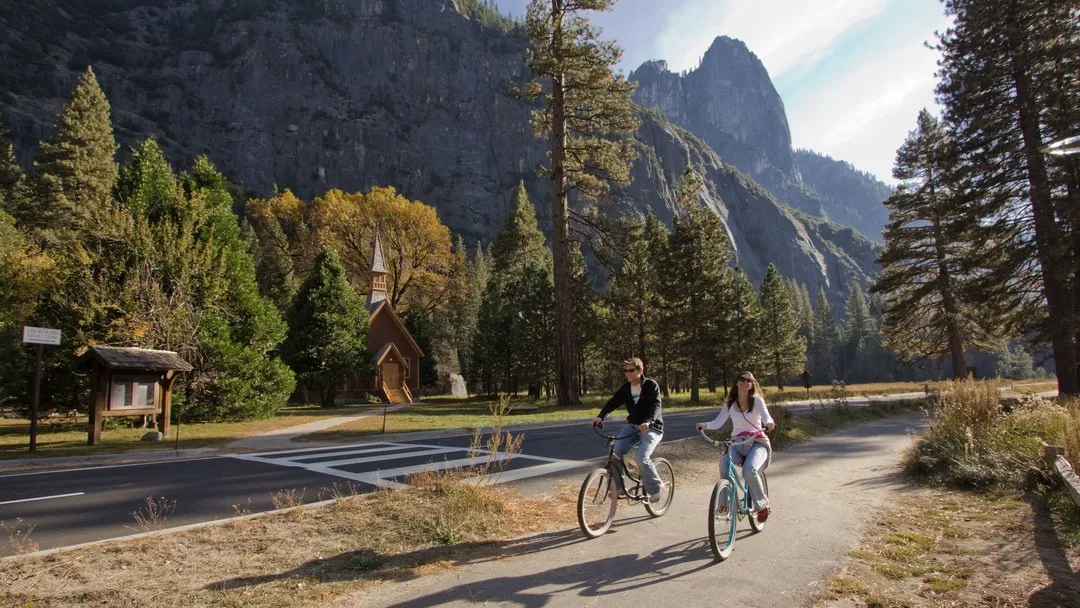
Mariposa Grove
Home to more than 500 mature giant sequoias, Mariposa Grove is the largest and most accessible sequoia grove in Yosemite National Park. Among its towering residents, the Grizzly Giant, estimated to be over 2,700 years old, and the California Tunnel Tree, through which visitors can walk, stand out as awe-inspiring reminders of nature's resilience and scale.
Visitors can access the grove by seasonal shuttle from the Mariposa Grove Welcome Plaza, or opt for a 2-mile hike along the Washburn Trail. Once inside, a network of well-marked paths allows exploration of both lower and upper sections of the grove, including the Guardians Loop and the Mariposa Grove Trail, which venture into more secluded stands of sequoias. Interpretive signs along the way offer insights into the ecological importance and natural history of these ancient trees.
>> Read More: Yosemite National Park Giant Trees: Facts about Giant Sequoias
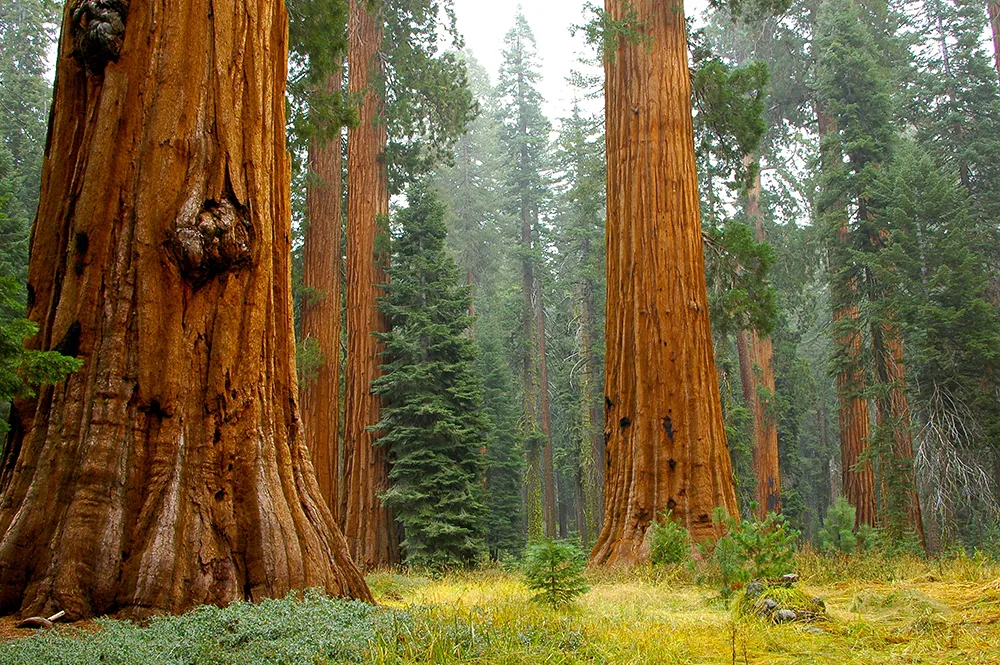
Merced River Rafting
During the warm summer months, the Merced River transforms into a serene and enjoyable waterway ideal for rafting, tubing, and wading. Flowing gently through Yosemite Valley, the river’s calm sections make it especially welcoming for families, beginners, and anyone looking for a relaxing activity amid the park’s grandeur.
Popular launch points include designated access near Stoneman Bridge, where visitors can begin a tranquil float that passes open meadows, shaded beaches, and dramatic granite walls that tower above the water. Along the way, you'll experience Yosemite from a new angle, feeling the breeze, hearing birdsong, and watching reflections ripple across the surface. This waterborne adventure is a peaceful complement to the park’s more rugged hikes and makes for a perfect midday escape from the summer heat.
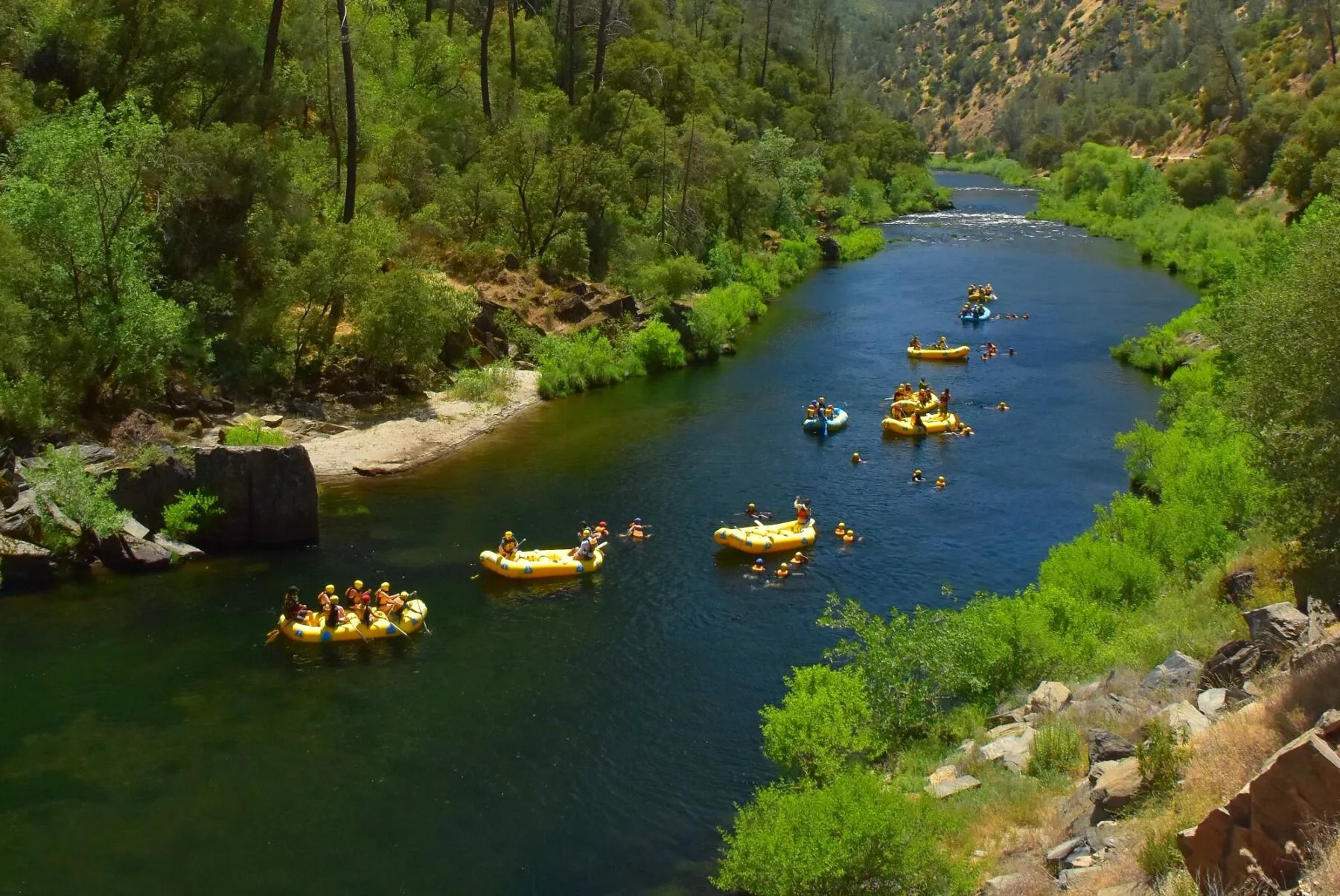
Tenaya Lake
Often called the "Jewel of the High Country", Tenaya Lake is a glacially formed alpine lake located at an elevation of 8,150 feet along the scenic Tioga Road. Surrounded by dramatic granite domes and a backdrop of forested slopes, it’s a prime location for outdoor activities such as picnicking, kayaking, swimming, and even paddleboarding on calm days.
The lake is easily accessible by car, and its clear, shallow waters near the shoreline make it especially inviting for families and casual waders. Several natural beach areas and granite outcroppings provide ideal spots for sunbathing or enjoying a lakeside meal. Early morning visits offer glass-like reflections of the surrounding peaks, while late afternoons often provide solitude and cooler breezes, especially appealing during the summer season.
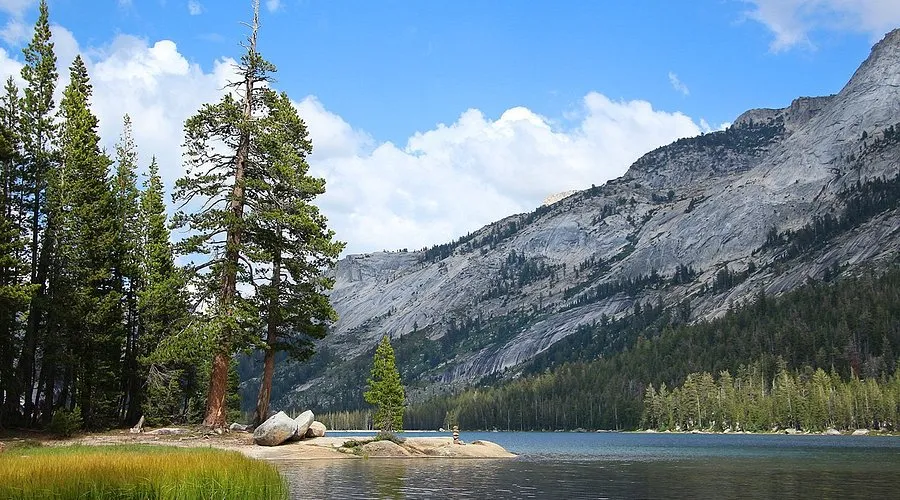
Ansel Adams Gallery
Located just steps from the Yosemite Visitor Center, the Ansel Adams Gallery honors the legacy of the renowned photographer whose black-and-white images played a pivotal role in the conservation of Yosemite and the American West. Visitors can view a rotating collection of Adams’ original prints, learn about his techniques, and explore the profound impact his work had on public perception of the national parks.
The gallery also features exhibitions by contemporary artists, photographers, and painters who continue to draw inspiration from Yosemite’s dramatic landscapes. In addition, it offers educational opportunities such as free guided photo walks and occasional photography workshops, making it a must-visit destination for those passionate about visual storytelling and the intersection of art and wilderness.
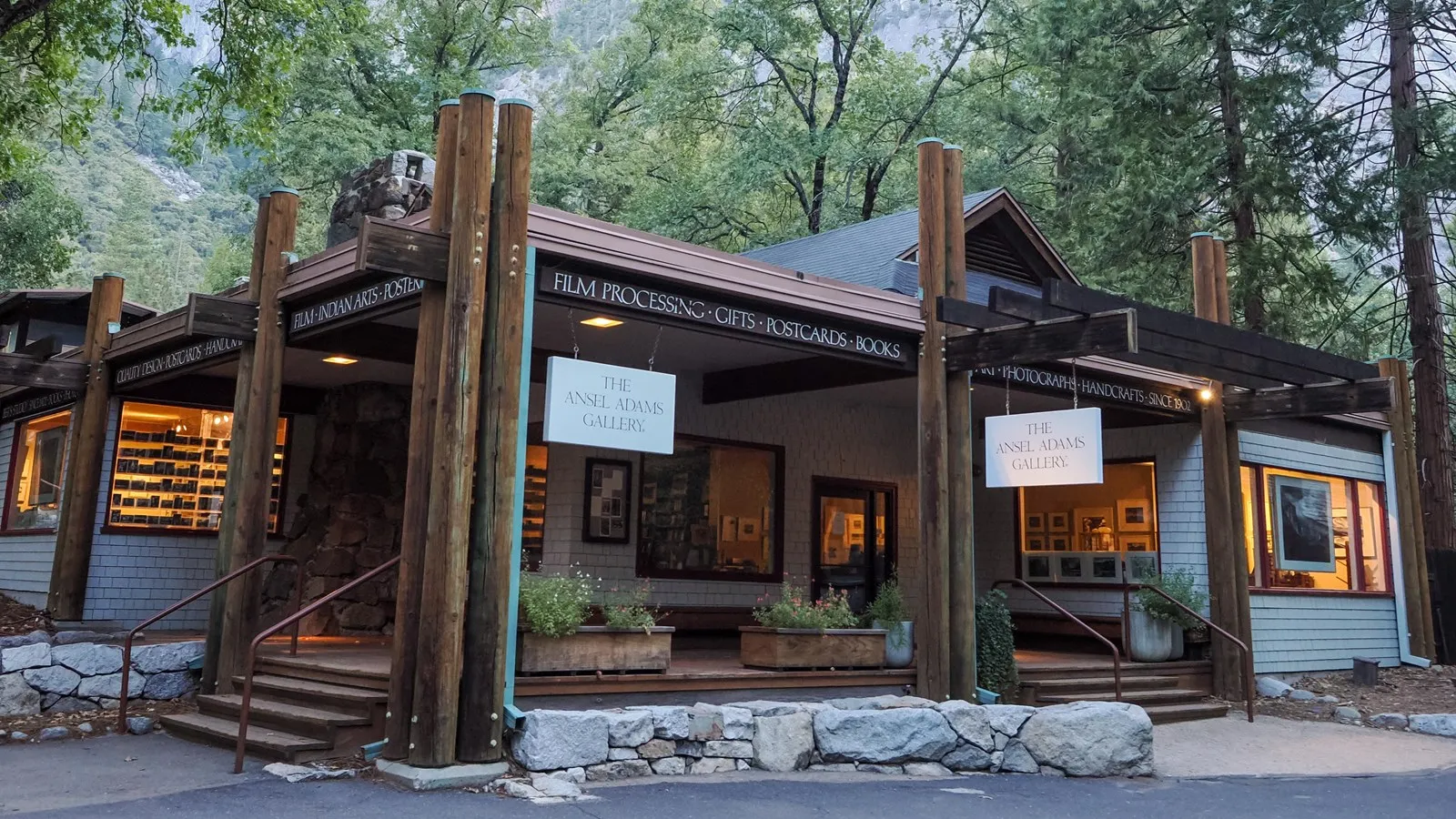
Hetch Hetchy
Hetch Hetchy Valley, located in the northwestern section of Yosemite National Park, is often overshadowed by Yosemite Valley but offers equally striking scenery with far fewer visitors. The centerpiece of the area is the O'Shaughnessy Dam, which creates the Hetch Hetchy Reservoir, an important water source for San Francisco. While the dam serves a vital function, it also marks the beginning of several excellent hiking trails that lead to waterfalls like Wapama and Tueeulala Falls, as well as sweeping views of remote wilderness.
Hikers can enjoy relatively level terrain along the shoreline or opt for more challenging routes into the backcountry. This part of the park is particularly appealing in spring when the waterfalls are at their fullest and wildflowers dot the landscape. For those looking to escape the crowds and experience a quieter, more contemplative side of Yosemite, Hetch Hetchy offers a peaceful and rewarding alternative.
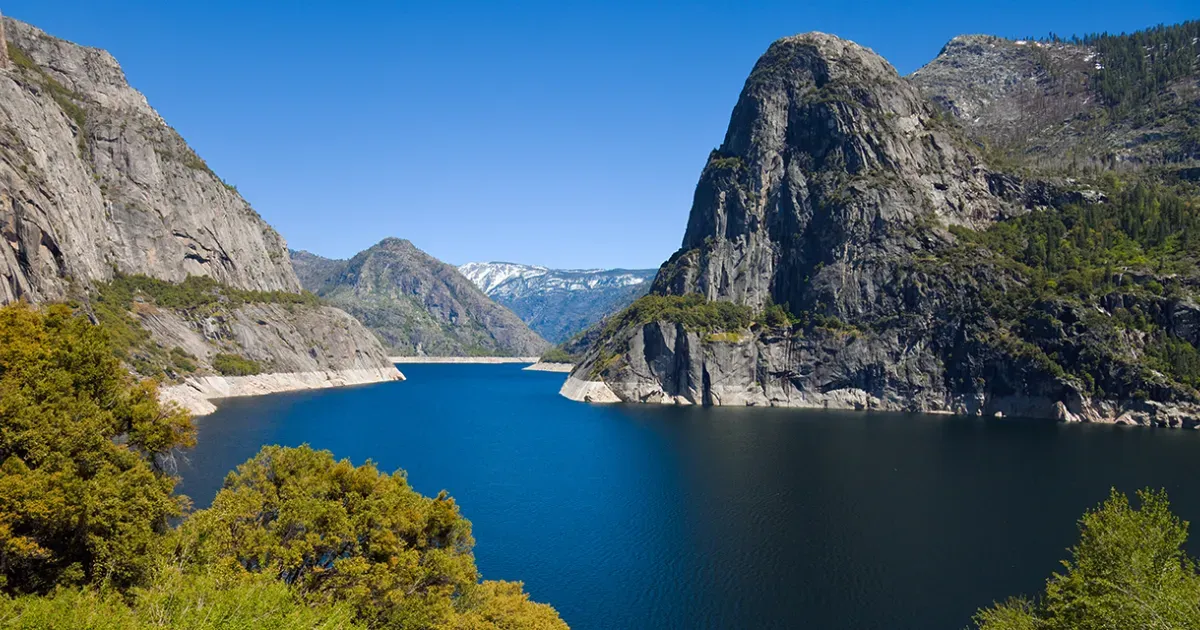
Ahwahnee Hotel Bar & Lounge
Step inside the historic Ahwahnee Hotel, a National Historic Landmark known for its blend of rustic architecture and refined interior design. Constructed in the 1920s with granite stone, timber beams, and Native American motifs, the hotel embodies the character and heritage of Yosemite itself. The Dining Room features soaring ceilings, massive stone fireplaces, and tall windows that frame scenic views of surrounding cliffs, pine forests, and seasonal wildlife activity.
This is an ideal location for a midday pause, whether you're enjoying a quiet lunch, an afternoon tea, or simply escaping the midday sun. The Ahwahnee provides a peaceful and elegant setting to reflect on your Yosemite adventure, rest your feet, and soak in a uniquely historical part of the park.
>> Read More: 11 Best Hotels Near Yosemite National Park: Reservations Request
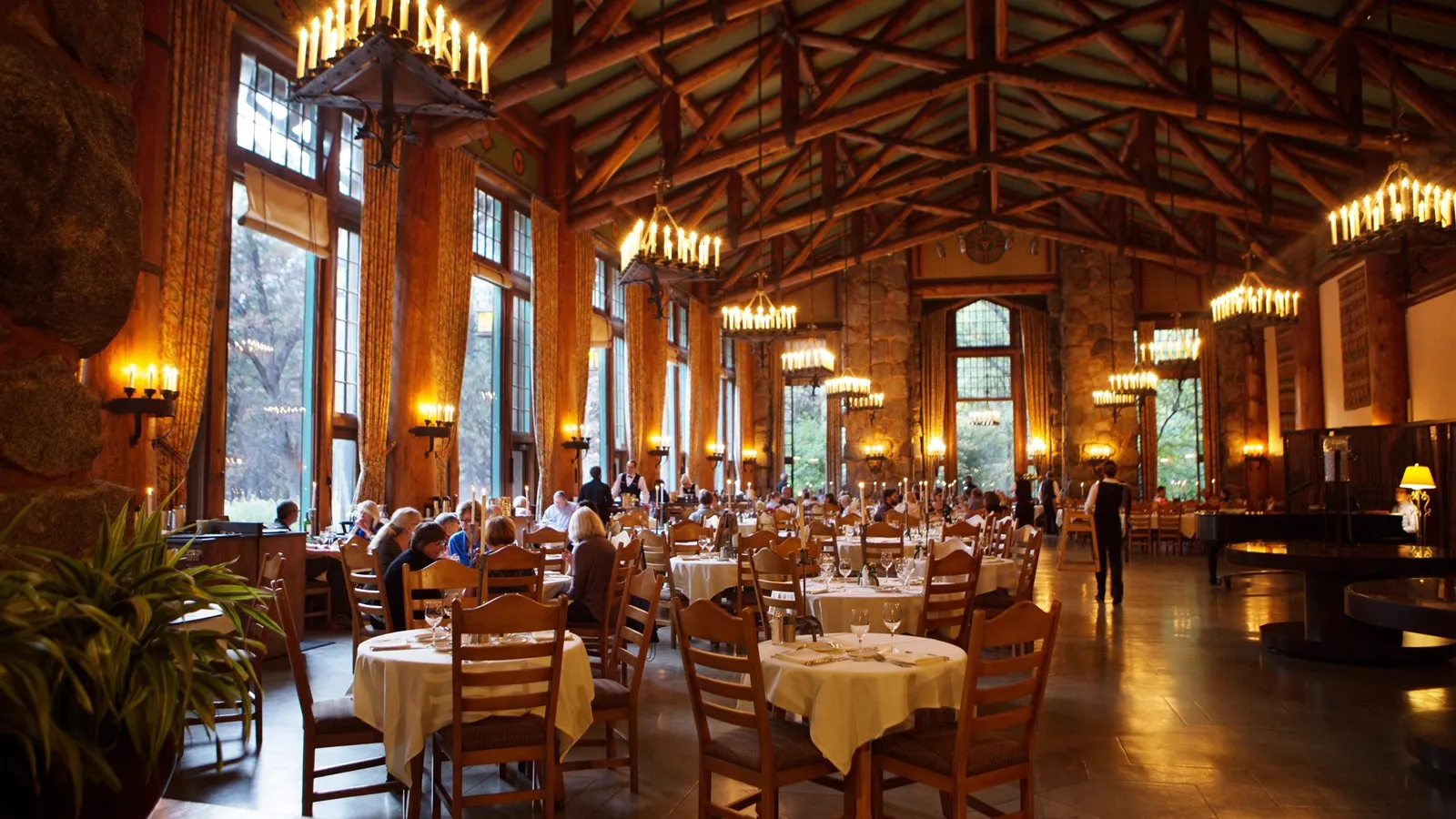
Where to Stay on Your Visit to Yosemite?
Accommodations in and around Yosemite range from campgrounds and tent cabins to luxurious lodges, offering something for every type of traveler planning their Yosemite adventure. In-park options include Curry Village, Housekeeping Camp, and the historic Ahwahnee Hotel, all situated within easy reach of popular destinations like Yosemite Falls and Glacier Point, some of the top things to do in Yosemite.
Outside the park, nearby towns like Mariposa, Groveland, and Oakhurst provide a wide variety of hotels and short-term rentals for those seeking comfort and flexibility. Booking well in advance is recommended, especially during peak seasons and holiday weekends. When planning where to stay, consider proximity to Yosemite Valley to reduce drive time and maximize your experience. Many visitors choose accommodations that allow them to easily access biking trails, scenic hikes, and other must-see things to do in Yosemite.
Tips for Dealing with the Weather
-
Expect Rapid Weather Changes: Weather in Yosemite can be highly unpredictable, often shifting dramatically throughout the day. Even during summer, cool mornings and late-afternoon thunderstorms are common, making adaptability key.
-
Layered Clothing is Crucial: Bring layers such as moisture-wicking base layers, insulating fleece, and a waterproof outer shell. These are essential regardless of season and allow you to enjoy outdoor activities and things to do Yosemite safely and comfortably.
-
Spring & Fall Essentials: Temperatures can dip significantly in the mornings and evenings. Be sure to pack a warm jacket, gloves, and a hat to stay cozy during sunrise hikes or scenic overlooks, some of the best things to do Yosemite when it's less crowded.
-
Winter Preparedness: Trails and roads can become icy or snow-covered. Equip yourself with proper footwear, traction devices, and check for road closures.
-
Always Check the Forecast: Conditions can change rapidly, especially in higher elevations. Reviewing the weather before setting out ensures you can adjust plans and prioritize safe and rewarding things to do Yosemite.
Conclusion
Yosemite National Park offers a wealth of experiences, from iconic viewpoints to hidden gems. With careful planning, you can make the most of your visit and enjoy some of the most remarkable landscapes in the world. Each season offers its own rewards, so don’t hesitate to come back and explore more of what this incredible national park has to offer.
>> Read More:

